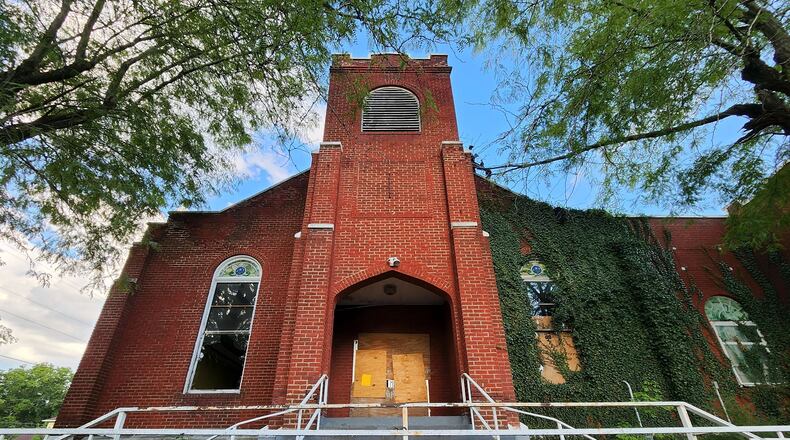The remaining $106 million in demolition and $262 million for brownfields will be disbursed “first come, first served” and requires a 25% match. The Ohio Department of Development told the Journal-News thus far they have awarded $42.1 million for demolitions and $250 million for brownfields.
The ODOD received 87 demolition applications statewide, requesting more than $172 million for more than 3,000 sites. They received 365 brownfield applications requesting more than $452 million.
“Program staff is still in the process of reviewing applications and projects,” Megan Nagy, a spokeswoman for the department said. “Additional awards for both programs will be made in the coming weeks.”
Land Bank Executive Director Seth Geisler preliminarily submitted 51 projects totaling about $11.5 million to the state on Feb. 18. The bulk of the money — $10.5 million — would go to razing the former Forest Fair Mall. He also applied for funds to demolish 26 Hamilton eyesores, 15 Middletown properties, 4 others from Fairfield and one each from New Miami and Lemon, Liberty, Ross and St. Clair townships.
The land bank has awarded contracts for eight projects totaling $199,406, all are dilapidated properties in Middletown and one in St. Clair Twp. for the $500,000 in guaranteed money. The biggest project is $92,000 to down the former Power of Deliverance Temple at 401 Crawford in Middletown, the lone commercial property.
A couple of the projects have fallen out of the pipeline but the next wave of projects will mainly be in Hamilton and he expects over the next few months they will be downing about 24 eyesores.
Geisler said this is a reimbursement program so the land bank has to front the money, which is doable, but he doesn’t want to drain their bank account doing it, so they are taking a phased approach.
“We have over $1 million, we can spend the first $500,000 without being reimbursed and wait to get reimbursed,” Geisler said. “But I don’t want to keep spending and spending and spending and not have an end date of when we can be submitting to get reimbursed.”
Board Secretary Kathy Dudley, who has helped steer the land bank through previous state and federal grant programs, said since they turned the applications in early — Geisler sent them 10 days prior to the deadline — they have a good shot at getting more funds. The funds were supposed to be dispersed first-come-first-served.
“How do you penalize somebody that did everything they were supposed to in a timely manner,” Dudley said. “I don’t think there is anything in the statute that gives preference to one county over another. I think the state underestimated the need and how much would be applied for.”
Geisler gave the land bank board a strategic plan presentation Monday that identified $13.6 million — $11.4 million is for dealing with brownfields — in future needs for commercial and residential demolitions, brownfield remediation projects. Butler County Treasurer Nancy Nix who chairs the land bank board told the Journal-News that figure is likely low.
“It’s not an exact science, it would probably be a starting point,” Nix said. “Blight is always going to be with us, it’s just how much are we going to expend resources combatting it. We would never be able to take care of all of it.”
Part of the strategic plan — the board has not adopted it yet — includes a request for additional money to battle blight. The plan suggests $5 million over five years could buy 60 or more blight busting projects annually.
Over the past decade the land bank used $2.6 million in Moving Ohio Forward money downing nearly 600 bad buildings. Then beginning in 2014 they received $5 million in federal Hardest Hit Funds for the Neighborhood Initiative Program and toppled 409 in the two big cities and a few in Fairfield Twp.
The county commissioners also approved siphoning a portion of Delinquent Tax and Assessment Collection money so other jurisdictions could get help downing problem properties. So far $307,817 has been spent eradicating 11 structures with those dollars.
Nix said additional funding will be the commissioners’ call.
“We’ve been in operation for 10 years and heavily dependent on state and federal grants, now we have another smaller grant, the brownfield and ODOD $1.5 million, but that’s eaten up so quickly,” Nix said. “So are we going to be an ongoing concern, are we going to combat blight or are we just going to kind of limp along. It’s really a commissioner decision.”
About the Author

